#Cluny MacPherson
Explore tagged Tumblr posts
Text
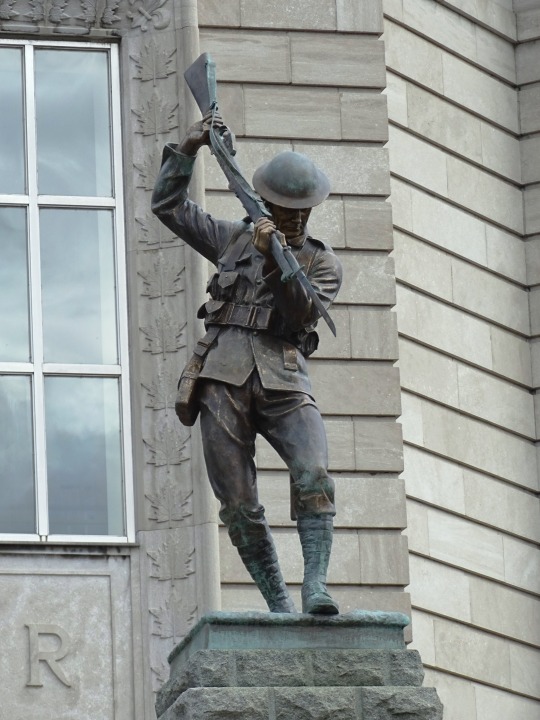
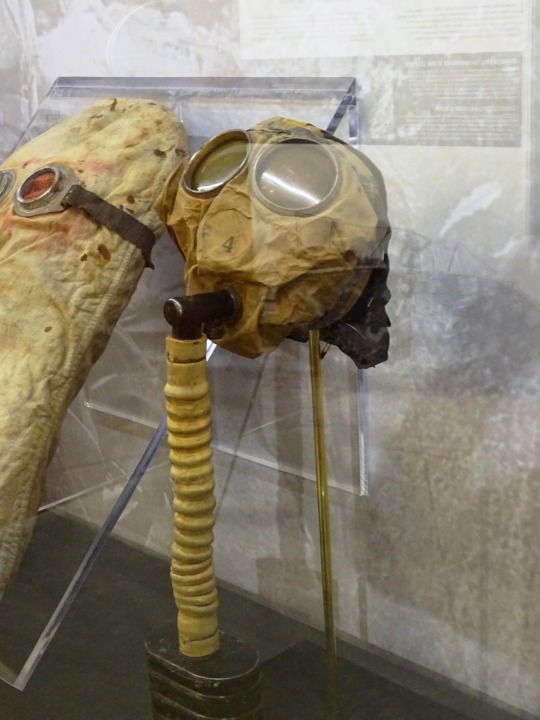
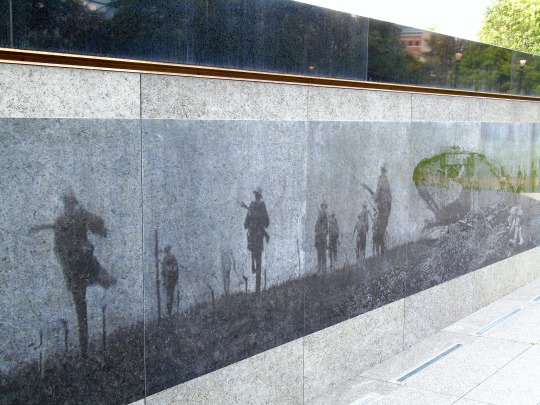
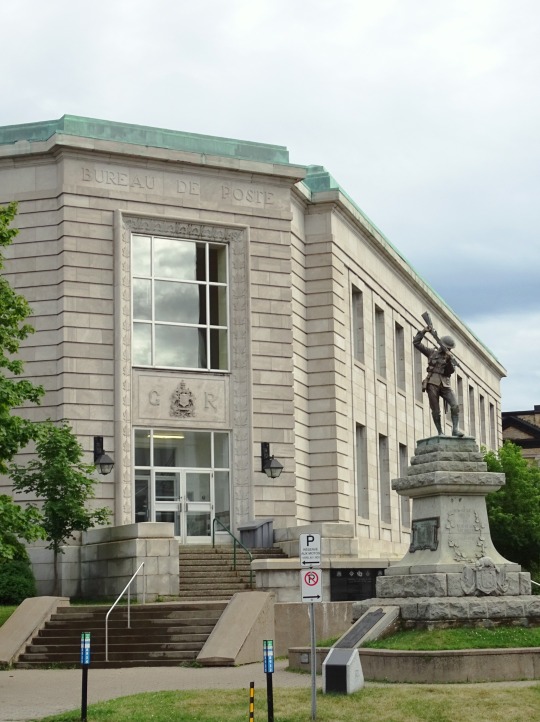
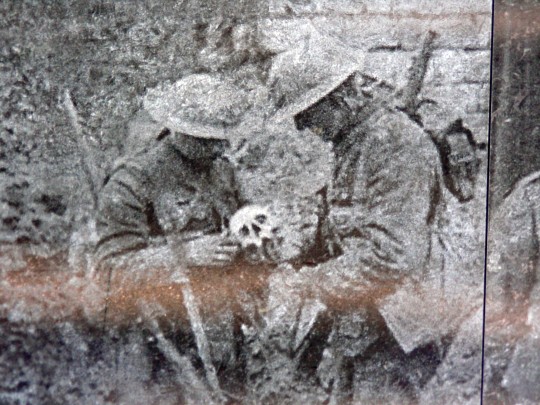
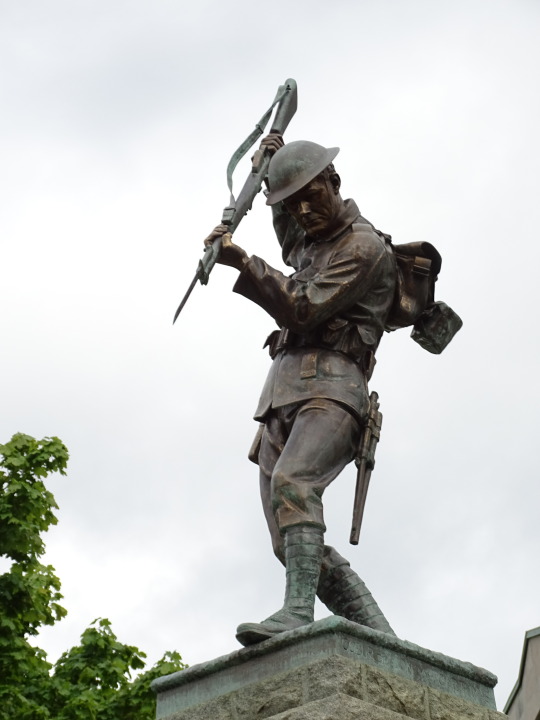
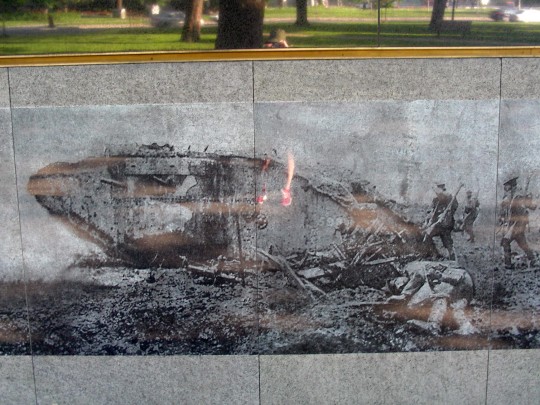
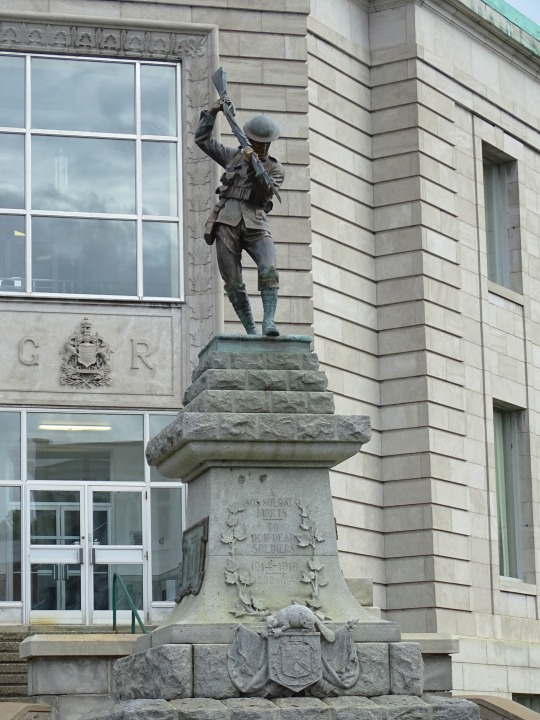
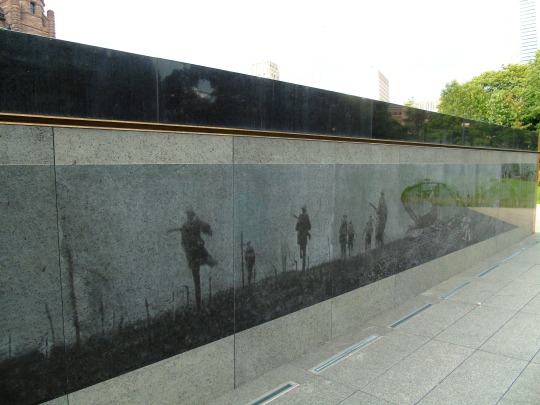
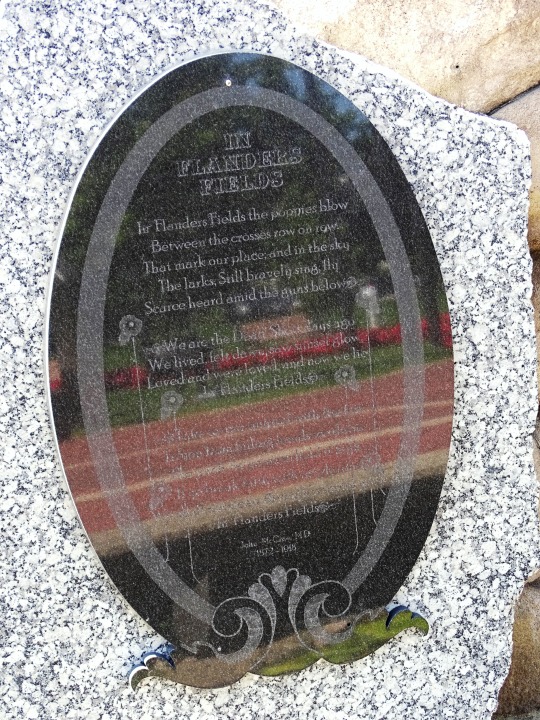
Canadian physician Cluny MacPherson first presented his gas mask invention to the British War Office on May 10, 1915.
#Citadelle of Quebec#Royal 22e Régiment Museum#Québec#Toronto#travel#2018#summer 2015#Ontario Veterans Memorial by Allan Harding MacKay#2009#Ontario#Quebec City#Cluny MacPherson#gas mask#10 May 1915#anniversary#Canadian history#WWI#World War One#World War I#public art#tourist attraction#landmark#cityscape#original photography#Monument to the Brave by Cœur-de-Lion McCarthy#Trois-Rivières#In Flanders Fields by Lieutenant-Colonel John McCrae#Munster#USA
3 notes
·
View notes
Text


On 31st October 1745 the Jacobite Army and Bonnie Prince Charlie began the march south to England.
Their initial reception in Scotland was distinctly cool. MacLeod and Macdonald of Sleat both refused to rise on the grounds that the Stuart prince had not arrived with the French invasion force they had demanded. Cameron of Lochiel and Ranald Macdonald of Clanranald urged Charles Edward to go home. The prince suavely refused, and over the course of the next three weeks persuaded Lochiel and Clanranald to bring out their clans. He did so primarily by convincing them that a Scottish rising would bring on a French invasion and that the English Jacobites would then in turn rise against the government. The 'Forty-Five proper is generally taken as having commenced when Charles Edward mustered his army of about 1500 men at Glenfinnan on 19th August.
From there the Jacobites quickly marched east and then south. The government garrison in Scotland, commanded by Sir John Cope, was weak and in large part composed of raw recruits. Cope none the less threw together a field army and marched north from Edinburgh to oppose the Jacobites. His army, however, moved slowly and its failure to pick up support from the whig clans shook Cope's confidence. In consequence he backed away from a potential battle at the Corrieyairack pass and retreated away from the Jacobites to Inverness. The Jacobite army promptly debouched from the highlands into Perthshire, picking up recruits all the time, notably Lord, David Ogilvy, Ewen Macpherson of Cluny and most importantly Lord George Murray.
By the time the army arrived before Edinburgh on 17 September it numbered about 1800. The city fell without a real fight the same day and so when Cope disembarked from the ships that had brought him back south from Aberdeen he felt obliged to offer battle in the hope of stemming the Jacobite tide.
Their numbers swelled to around 2500, they "enjoyed" victory at Prestonpans on 21st September effectively delivered most of Scotland into Jacobite hands, at least temporarily, and encouraged one cautious leading Jacobite, George Mackenzie, third earl of Cromarty and hi son John, Lord MacLeod.
The key question for the Jacobites was what to do next. Charles Edward favoured advancing into England to link up with the French army he was confident would soon invade it and bring out the English Jacobites. He finally carried the Jacobite grand council by one vote and the invasion of north-west England was launched.
The Jacobite forces were gaining recruits as they marched south, their numbers were about 6,000 men and included French, English and Irish troops. Four French ships had been despatched with weapons and supplies.
On 4th December they reached Derby, a town only 100 or so miles from London. More to come as the weeks go by.
8 notes
·
View notes
Text




Penicuik Sketches Reconstructions
In honor of St. Andrew’s Day, I decided to draw a series of drawings of one of my favorite subjects—Scottish Highlanders of the Jacobite Uprisings of 1715 and 1745 (I’ve loved Scottish history since 10th grade).
One of the few primary sources we have of the Jacobite Uprisings are a series of anonymous sketches of soldiers in Bonnie Prince Charlie’s army sketched by an inhabitant of the town of Penicuik, drawn when the Jacobites stayed briefly in the town. The sketches are, well, sketches, and thus lack a lot of detail, so I decided to reconstruct four of the sketches with captions naming the figures in my own style to bring these figures more to life.
General Observations
All the highlanders are portrayed as clean-shaven with loose, stringy hair.
The highlanders are portrayed as stocky and fleshy-face.
The Figures
Glengary-Glengary is a left-handed swordsman, wielding a basket-hilted broadsword and targe, with a pistol at his belt. He wears a large blue bonnet and sporran, but unlike the popular image of a Highlander does not wear a belted plaid; instead, he wears a short jacket and breeches. The Penicuik sketches don't really capture the colors of the jackets, so I elected to make his jacket have a tartan pattern; tartan garments such as coats, jackets, waistcoat and breeches were often signals of Jacobite sympathy.
Duncan Mcgregor of Dalnasplutrach-This Highlander also wears breeches, his plaid simply wrapped over his shoulder like a sash. He still wears the iconic blue bonnet and carries the classic arms of broadsword and targe.
Keppoch-This may very well be a sketch of the Jacobite officer Alexander MacDonald of Keppoch, 17th Chief of the MacDonalds of Keppoch, who was killed at the battle of Culloden in 1746; if not, it is almost certainly one of his men. I drew "Keppoch" as a middle-aged man, and decided that what looked like baggy shorts was likely the artist's rendition of the belted plaid. He wears a blue bonnet, with the white cockade of the Jacobite army pinned prominently on the side. Like other well-off Highlanders, he carries a broadsword, targe, and pistol.
Mcpherson-This may be a sketch of Ewen MacPherson of Cluny, AKA "Cluny MacPherson," the Chief of Clan MacPherson, or it may be one of his men. In either case, the way his plaid is being portrayed is not easily discernable. Given his bulky profile, I decided to interpret the drawing as him wearing his plaid wrapped around his shoulders for warmth and belted at the waist to keep the voluminous folds tucked away, but not worn in the way a belted plaid typically would be. I decided to portray "McPherson" as an old but vigorous man, wearing a plain grey jacket but with tartan breeches and stockings and the iconic Highland sporran hanging in front of his waist for easy access. He is not portrayed in the original sketch wearing any kind of headgear, so I omitted that detail, but kept the pistol at his belt. He too carries the broadsword and targe of the affluent Highlander.
#sketch#character art#cartoon#cartoon characters#scotland#highlander#penicuik sketches#Historically plausible#Broadsword#targe#tartan#belted plaid#Blue bonnet#Scottish highlander#jacobites#Jacobite Uprising of 1745#The ‘45
2 notes
·
View notes
Text

A heavily embellished silk tartan gown worn by Sarah Justina Davidson of Tulloch. This outfit was part of her wedding trousseau and dates from her marriage to Ewen Macpherson of Cluny in 1832. The silk thread embroidery that adorns both the skirt and the belt is a reference to red whortleberry, a clan plant badge with significance to both the Davidsons and the Macphersons.
48 notes
·
View notes
Text

Be 100% Authentic!
Calum MacPherson (1828–1898) was one of the most famous pipers of the 19th century, ofter referred to as Calum Pìobaire or Calum Dubh. He was born in Raasay to Angus ‘Cam’ MacPherson (1800–1887) who could trace his musical lineage to the famous MacCrimmons of Boreraig, the hereditary pipers of MacLeod of Dunvegan.
From his home at Catt Lodge, Badenoch, where he taught, he would walk to competitions throughout the Highlands and Islands . A tale is told of his attending a big piping competition in Edinburgh, where sixty pipers were to be present. “Are you going to Edinburgh?” Cluny MacPherson asked him. “Well,” he said, “my pipes aren’t set up to go there.” “What do you think it would cost to get your pipes set up?” “It’ll cost a pound.” “Here it is, then,” He got a pound note. And he was quite fond of drink. “If you drink that,” he said, “you’ll no longer be in our service.” Now he was going to keep this secret, and whatever happened, his wife found out that he had a pound note, and she was likewise fond of the drink. She stole the pound note. Calum came out and he was quite sad for he was going to get his pipes set up. His daughter came out. “What’s wrong with you, man?” “Well, Cluny MacPherson gave me a pound note to get my pipes set up in order to go to Edinburgh; and it was stolen from me.” “Well, I bet you,” she said, “that it was mum who stole the pound note and I’ll steal it back from her.” She searched here and there. The pound note had been hidden in quite a secret place but the daughter found it. She gave the pound note to Calum so that he could get everything ready to set up his pipes. He set out for Edinburgh. Cluny MacPherson’s son accompanied him to make sure he stayed off the drink. He gave him all his food and drink that he wished for but he never got more than was necessary. And so when he went to the competition he took the first prize out of the sixty pipers. And they were very proud of Calum’s performance."
Be yourself #projectourworld
Photo; Calum and Mrs Kennedy, proprietor of the Dalwhinnie Inn (Loch Ericht Hotel)
*This student was John MacDonald, M.B.E., Honorary Piper to H.M. King George V and King George VI
6 notes
·
View notes
Text
Grand Tours of Scotland's Rivers episode 2
Grand Tours of Scotland's Rivers episode 2: Paul Murton explores the upper reaches of the river Spey - Scotland’s third longest river - from its source in the wilds of Badenoch to Broomhill, halfway down. #travel #Scotland
Grand Tours of Scotland’s Rivers episode 2: Paul Murton explores the upper reaches of the river Spey – Scotland’s third longest river – from its source in the wilds of Badenoch to Broomhill, halfway down. He hears stories of clan chief Cluny Macpherson, who hid with his gold for nine years in an inaccessible cave. Heading to a hidden tributary, Paul discovers a secret aristocratic…

View On WordPress
0 notes
Text
My Outlander Story
In honour of World Storytelling Day and the lovely folks over at the @thelallybrochlibrary, here is Phoenixflames12′s Outlander story in full.
I stumbled upon the world of Outlander purely by accident whilst researching a long and laborious footnote in my undergraduate dissertation on the relationships between fathers and sons in Robert Louis Stevenson’s Scottish novels. The chapter in question was discussing the relationships between young, male protagonists and found father figures in Kidnapped (which is set in part in the Highlands with Davy Balfour and Alan Breck fleeing across the heather from the British and discusses Cluny MacPherson and Charles Edward Stuart) and Treasure Island and I must have got lost down a rabbit hole because I came out on the other side with a sudden desire to read these novels about time travel and the Jacobite rebellion of 1745-46.
I think I fell in love with Outlander because at it’s heart, it’s rooted in a historical time period that I adore and the way that Gabaldon describes the Scottish landscape, making it a character in the series, is just sublime. There’s also Sam Heughan’s Jamie to consider, the fact that he grew up about an hour and a half from my childhood home and went to the Royal Conservatoire in Glasgow, bla bla bla.
I started writing Outlander fanfiction again by accident (basically my involvement in this fandom can be described as one big, happy accident) and my first and cherished offering to this fandom is Dreaming, a reworking of one of Jamie’s Wentworth nightmares in Dragonfly in Amber. I have been so blessed and absolutely floored by the love, generosity and support of the Outlander fandom both here on tumblr and on AO3- most especially @gotham-ruaidh, @missclairebelle, @bonnie-wee-swordsman, @futurelounging, @abbydebeaupreposts, @caitbalfes, @cagedbirdsong, @smoakingwaffles, @thistlekat777, @laythornmuse, @outlanderedandoverhere, @whiskynottea, @iwanttodriveyouthroughthenight (who sadly isn’t very active anymore, but do go and check out her blog- she’s awesome!), @abreathofsnowandashes and many, many others who I can’t recall right now.
I was inspired to start reading Outlander fanfiction because of the wealth of material and the sheer amount of talent and courage and kindness that’s on display on a daily basis. I haven’t been disappointed and I hope that we all continue writing about this Scotsman and his Sassenach for many years to come!
43 notes
·
View notes
Text
LIVESTOCK EXPORT TO MALAYSIA
LIVESTOCK EXPORT TO MALAYSIA
Please be advised that we don’t utilise the services of a Mr. Thambirajan also known as Rajan. This individual does not represent Cluny Livestock Exports in the Malaysian market in any capacity and has not done so for about 5 years. Any photos or videos of livestock taken by Angus Macpherson are the sole property of Cluny Exports and can’t be used for commercial purposes without the express and…
View On WordPress
0 notes
Photo
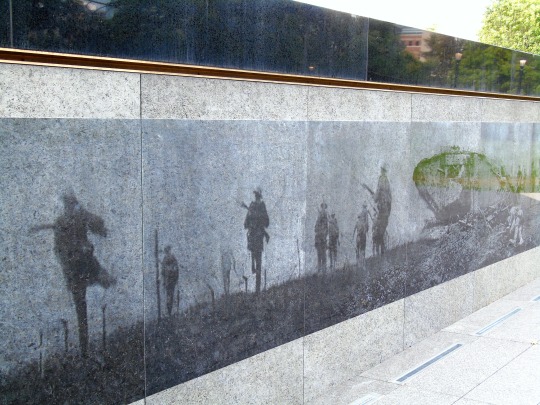

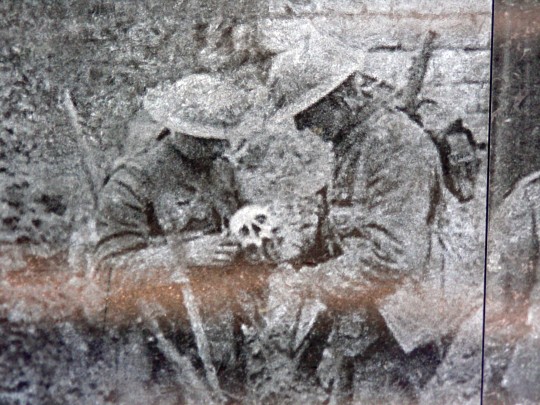

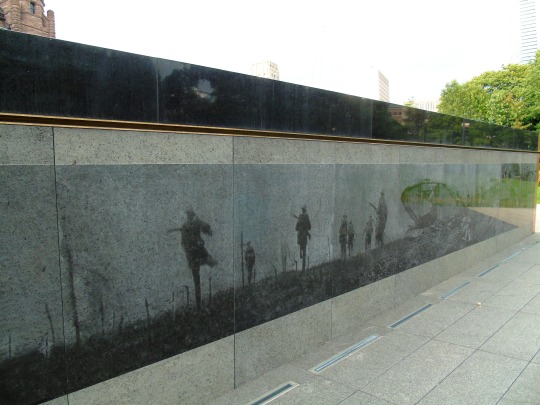


Canadian physician Cluny MacPherson first presented his gas mask invention to the British War Office on May 10, 1915.
#Citadelle of Quebec#Royal 22e Régiment Museum#Québec#Toronto#travel#2018#summer 2015#Ontario Veterans Memorial by Allan Harding MacKay#2009#Ontario#Quebec City#Cluny MacPherson#gas mask#10 May 1915#anniversary#Canadian history#WWI#World War One#World War I#public art#tourist attraction#landmark#cityscape#original photography#Monument to the Brave by Cœur-de-Lion McCarthy#Trois-Rivières
3 notes
·
View notes
Text



March 17th 1746 Lord George Murray and Cluny Macpherson fell upon the Campbell militia posts in the Braes of Atholl, at the head of Strathtay, and wiped them out.
A brilliant feat of arms, it aroused a blaze of Jacobite optimism. Lord George Murray proposed a further audacious plan to move south to retake his family home of Blair Castle and recruit more men from the Atholl lands.
On 15th March Murray made a rapid march into Perthshire with his Atholl Regiment. At Ruthven he was joined by Archibald Menzies of Struan, and Cluny MacPherson. He had 700 men in total and by the night of 16th March he had reached Bunrannoch (near what is now Kinloch Rannoch).
The first Hanoverian outpost at Rannoch fell within minutes and throughout the rest of the night and the early hours of the 17th the Jacobites captured thirty government outposts across Perthshire. By noon on this day 276 years ago Lord George Murray’s force was at the gates of Blair Castle.
Some Hanoverian garrisons had fought, some had given up quickly and some had even mutinied and gone over to the Rebels. Most posts were commandeered farm houses and offered little protection to the defenders. They were no match for a determined force of several hundred Jacobites itching for a fight.
The Jacobites had struck a blow against Cumberland’s forces in the Southern Highlands. Prince Charles’s army may have retreated north but they could still fight back.
It was not all going the Jacobites way on this day. Lieutenant Colonel Sir Andrew Agnew and his 300 Campbell Militia in Blair Castle had no intention of surrendering.
They were in a strong position with arms and supplies and Lord George Murray would have to conduct a siege to retake his ancestral home.
Again to show that the Jacobites were not only fighting the English I will point out that Blair Castle was General Murray’s ancestral home and held by Murray his brother the then Duke of Atholl, James Murray so it was very much a family affair with one supporting Prince Charles and the other the Hanoverian government. With that the clan was divided between followers of each brother.
It is said when Lord George arrived at Blair he had ‘pipes playing and colours flying’, however the siege was abandoned two weeks later.
14 notes
·
View notes
Quote
Ewen pulled his bonnet lower on his brows, and, bending his head against the sleety blast, set his face with the rest towards the fatal stretch of moorland, the last earthly landscape that many a man there would ever see. But over that possibility he was not troubling himself; he was wondering whether it were possible to be much hungrier, and what his foster-brothers would do when they returned and found him gone into battle without them. And like a litany he repeated to himself, to be sure that he remembered them aright, the directions Mac Dhomhnuill Duibh had given him: 'Half-way up the southern slope of Beinn Bhreac, about a hundred paces to the right of the waterfall...' Just as they were all taking up their positions, a gleam of sun shot through the heavy, hurrying clouds and fell bright upon the moving tartans, Stewart and Cameron, Fraser, Mackintosh, Maclean, and MacDonald, lighting too the distant hills of Ross across the firth, whence Cromarty came not, and the high ground over the Nairn water on the other hand, where Cluny Macpherson was hurrying towards them with his clan, to arrive too late. Then the gleam went out, and the wind howled anew in the faces of those who should spend themselves to death unavailingly, and those who should hold back for a grudge; it fluttered plaid and tugged at eagle's feather and whipped about him the cloak of the young man for whom the flower of the North stood here to be slain; and faint upon it, too, came now and then the kettledrums of Cumberland's advance.
The Flight of the Heron, D.K. Broster
#The Flight of the Heron#D.K. Broster#my quasi-liveblog of this book was pretty much centred on the Keith/Ewen Moments™#but this passage is probably my favourite in the entire book#absolutely breathtaking#there's no need for a battle scene#all the awful inevitable tragedy and futility of Culloden is right there#that second paragraph is the sort of passage that makes me weep as a writer because I can only dream of creating that sort of impact#X'D
14 notes
·
View notes
Photo

MacPherson Red Cluny
41 notes
·
View notes
Photo

Evening Gown | c.1832 —Woman's high-waisted dress of silk, with a lace-trimmed bodice and a band of white satin on the skirt, supposed to have been worn by Mrs Macpherson of Cluny: Scottish, 1832. #whattheywore #historicalfashion #fashion #fashiondesign #fashionhistory #historyoffashion #vintagefashion #art #vintage #historicfashion #defunctfashion #historicalfashion #costume #costumedesign #couture #costumehistory #regencyera #regencyfashion #scotland #scotch #scottishfashion #tartan #plaid #christmas #nationalmuseumscotland
#fashionhistory#scottishfashion#vintage#whattheywore#vintagefashion#plaid#historicalfashion#art#costume#scotland#regencyfashion#couture#historyoffashion#fashiondesign#historicfashion#regencyera#fashion#costumehistory#tartan#defunctfashion#scotch#christmas#nationalmuseumscotland#costumedesign
82 notes
·
View notes
Photo

1832 Dress, National Museums Scotland. Woman's high-waisted dress of silk, with a lace-trimmed bodice and a band of white satin on the skirt, supposed to have been worn by Mrs Macpherson of Cluny: Scottish, 1832
1 note
·
View note
Text
Canadian Inventions
Basketball: The game so loved by Americans was invented by Canadian James Naismith in 1891. Insulin as a diabetes treatment - Invented by Frederick Banting, Charles Best and James Collip in 1922. Superman - Created by Canadian-born artist Joe Shuster and American writer Jerry Siegel in 1932. The first incandescent lamp with a light bulb by HenryWoodward in 1874. Standard time - introduced by Sir Sandford Fleming in 1878. Canola - created in the early 1970s by Keith Downey and Baldur R. Stafansson. AM Radio - invented by Reginald Fessenden in 1906. The snowmobile - invented by Joseph-Armand Bombardier in 1937. Nanaimo bars. Canada Dry Ginger Ale - After hundreds of experiments, John J. McLaughlin achieved the perfect formula for his Ginger Ale in 1904. Crispy Crunch. Coffee Crisp. Walkie-Talkies - invented by Donald L. Hings and Alfred J. Gross in 1942. The prosthetic hand - invented by Helmut Lucas in 1971. The snow blower - invented by Arthur Sicard in 1925. The foghorn - invented by Robert Foulis in 1854. Sonar - invented by Reginald Fessenden. First cancer radiation therapy: the Cobalt Bomb in 1959. The goalie mask - invented by Jacques Plante in 1959. Landmark paper cementing the stem cell theory published in 1963 by James Till and Ernest McCulloch. First identifiable cancer tumour antigen - invented by Phil Gold in 1963 and first blood test for cancer is made available in 1970. IMAX - co-invented by Roman Kroitor in 1968. Trivial Pursuit - invented by Chris Haney and Scott Abbott in 1979. Instant replay - invented for CBC's Hockey Night in Canada in 1955. Lacrosse - codified by William George Beers around 1860. Ice hockey - invented in Windsor, Nova Scotia. The electron microscope - The first electron microscope in North America was built by J. Hillier, A. Prebus and E.F. Burton at the University of Toronto in 1938. Pablum - invented by Frederick Tisdall, Theodore Drake and Allan Brown in 1930. Easy-Off oven cleaner - invented by Herbert McCool in 1932. The cardiac pacemaker - invented by John Hopps. The Wonderbra - invented by Louise Poirier. The alkaline battery - invented by Lewis Urry in 1954. The caulking gun - invented by Theodore Witte in 1894. The Jolly Jumper - invented by Olivia Poole in 1959. The garbage bag - invented by Harry Wasylyk in 1950. The paint roller - invented by Norman James Breakey. The Robertson screw - invented by P.L. Roberston. The Bloody Caesar - invented in Calgary in 1969. Plexiglass - invented by William Chalmers at McGill University in 1931. The explosives vapour detector - invented by Lorne Elias in 1985. Five-pin bowling - invented by Thomas F. Ryan in 1909. Computerized Braille - invented by Roland Galarneau in 1972. The 56k modem - invented by Dr. Brent Townshend in 1996. The pager - invented by Alfred J. Gross in 1949. The McIntosh red apple - Developed by John McIntosh. Peanut butter - first patented by Marcellus Gilmore Edson in 1884. Key-frame animation - invented by Nestor Burtnyk and Marcelli Win in the early 1970s. The technique revolutionized the way animators created 3D graphics. The Java programming language - invented by James Gosling. The telephone - invented by Scottish-born inventor Alexander Graham Bell in Brantford, Ontario. The BlackBerry - invented by Mike Lazaridis. The Canadarm - used on the Space Shuttle. The first camcorder, the CCD (Charge Coupled Device) which is at the heart of most digital cameras and telescope imaging systems - invented by Willard Boyle in 1969. First to synthesize RNA the genetic messenger that carries information from DNA to the cell's protein making systems - Kelvin Olgivie in 1988. Developed the concept of the Ecological or carbon footprint, the measure of human demand on the Earth's ecosystems by William Rees in 1992. The Victoria Hockey Club of Montreal is credited with making and using the first round pucks in the 1880s. Jockstrap hard cup - invented in 1927. Table hockey - invented by Donald Munro in the 1930s. The first commercial jetliner to fly in North America - James C. Floyd Electric wheelchair - invented by George Klein in 1952 Electric car heater - invented by Thomas Ahearn in 1890 The first military gas mask - invented by Cluny MacPherson in 1915
4 notes
·
View notes
Text
The missing link to our prisons
The missing link to our prisons - Sam Gyimah needs to read the Macpherson report
At the end of March a debate took place in the House of Commons as part of the process of creating the Governments Prisons and Courts Bill. The debate was entitled “Prisons: purpose, and role of Secretary of State” and during this debate the shadow minister for justice Yasmin Qureshi stated “When we heard that this Bill was being introduced, everyone got very excited about it because it was…
View On WordPress
#Environment#Macpherson Report#Sam Gyimah#Sir William Macpherson of Cluny#Stephen Lawrence#Yasmin Qureshi
0 notes